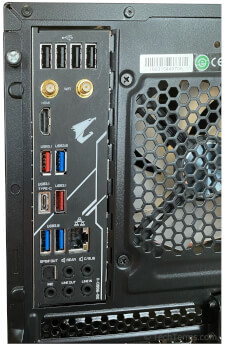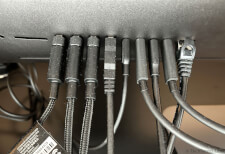I/O
Stands for "Input / Output."
I/O refers to a computer system receiving input and returning output, and is one of the fundamental aspects of computing. When you type a letter on a keyboard or click a mouse button, you provide input; when the computer displays something on its monitor, that's output. The term can refer to both I/O devices and I/O operations.
I/O devices include the peripherals that allow you to interact with a computer, as well as those that enable two computer systems to exchange data. Input devices allow you to give the computer instructions or input data — for example, a keyboard, mouse, microphone, or touchpad. Output devices show data to you, like monitors, speakers, and printers. Some devices handle both input and output, either to the user (like a multifunction printer/scanner or gaming controller with haptic feedback) or to other computer systems (like a network interface or storage device).
The ports on a computer that you plug devices into are known as I/O ports. USB ports, display interfaces like HDMI and DisplayPort, audio ports, and Ethernet ports are the most common ones found on modern computers.
A computer's CPU manages its I/O operations. Data travels to the CPU from a device controller by a data bus. The CPU sends the data it receives along the right bus to its destination. That destination may be a user-facing output device like the computer's monitor, its memory or storage devices, or a network interface to another system.
 Test Your Knowledge
Test Your Knowledge
